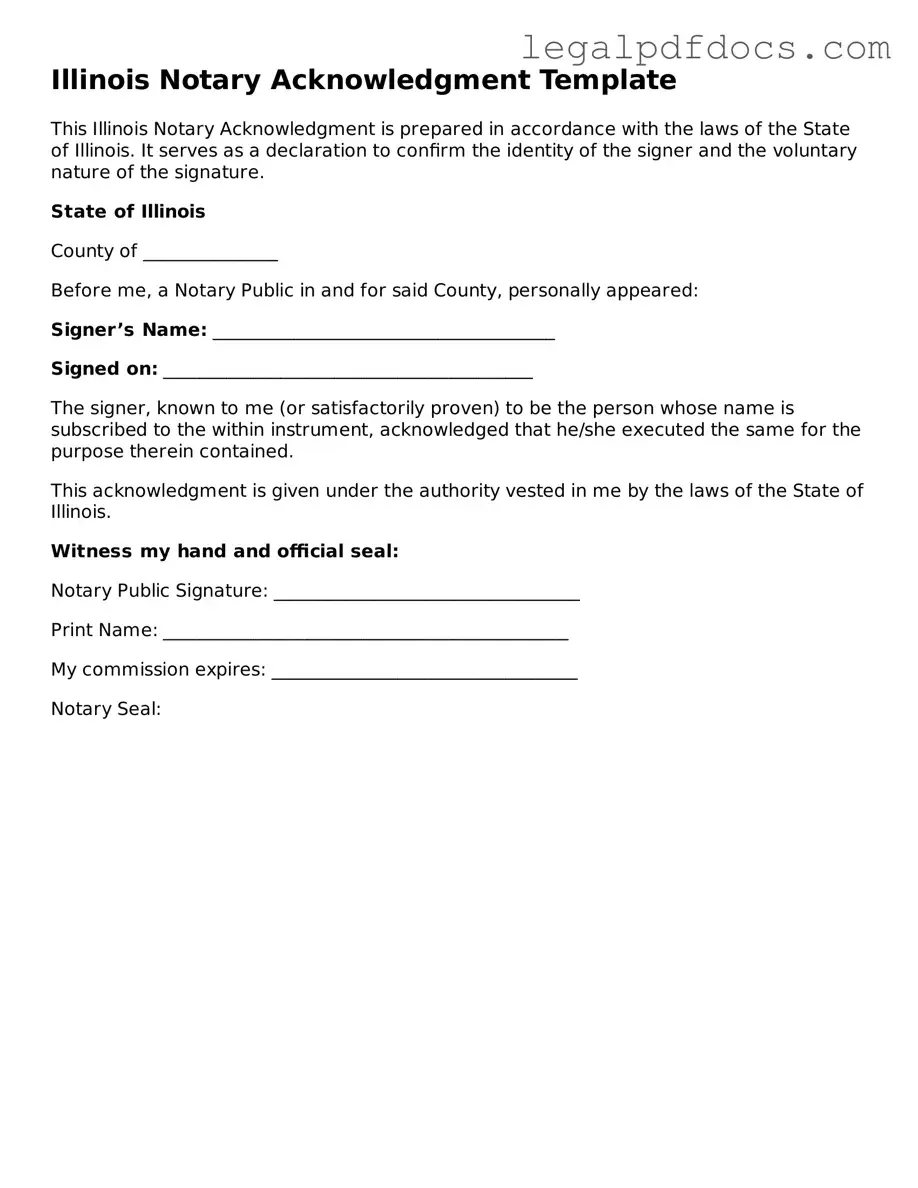The Illinois Notary Acknowledgement form plays a crucial role in various legal and financial transactions, serving as a verification tool that ensures the authenticity of signatures on important documents. This form is often utilized in real estate transactions, contracts, and other formal agreements, where the presence of a notary public adds an essential layer of credibility. By requiring the signer to appear before a notary, the form helps to prevent fraud and ensures that individuals are signing documents willingly and with an understanding of their contents. It includes specific details such as the name of the signer, the date of the acknowledgment, and the notary's official seal, all of which are vital for the document's legal standing. Understanding how to properly complete and utilize this form is not just beneficial; it is necessary for anyone involved in legal processes in Illinois. Failing to use the Notary Acknowledgement correctly could lead to complications or disputes in the future, making it imperative for individuals and businesses alike to grasp its importance and functionality.
